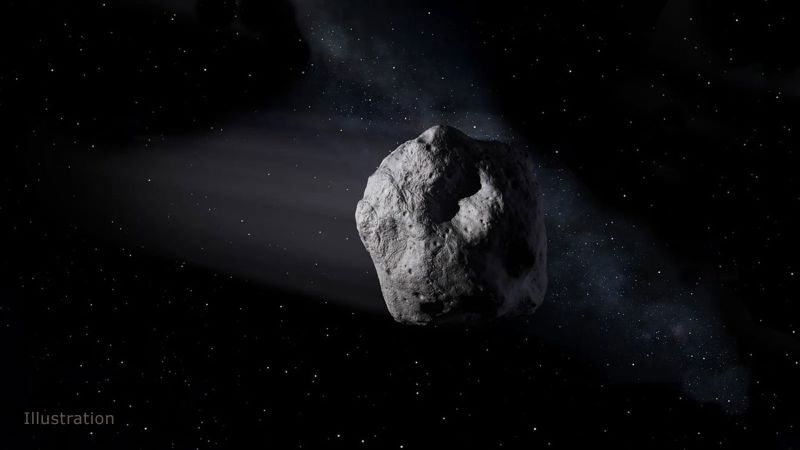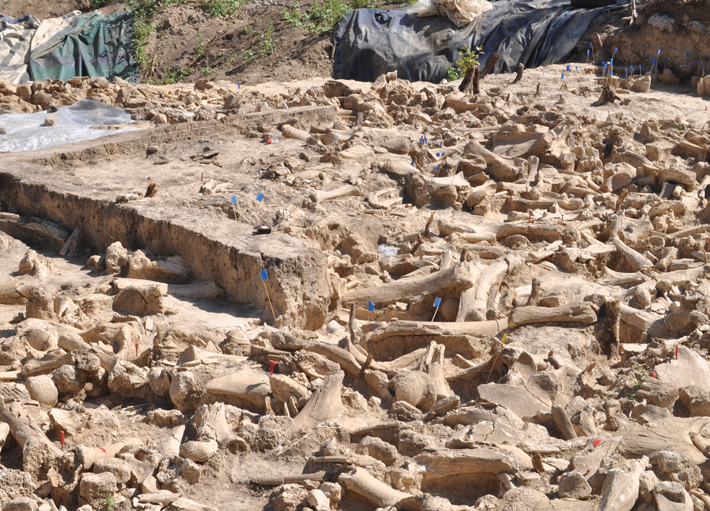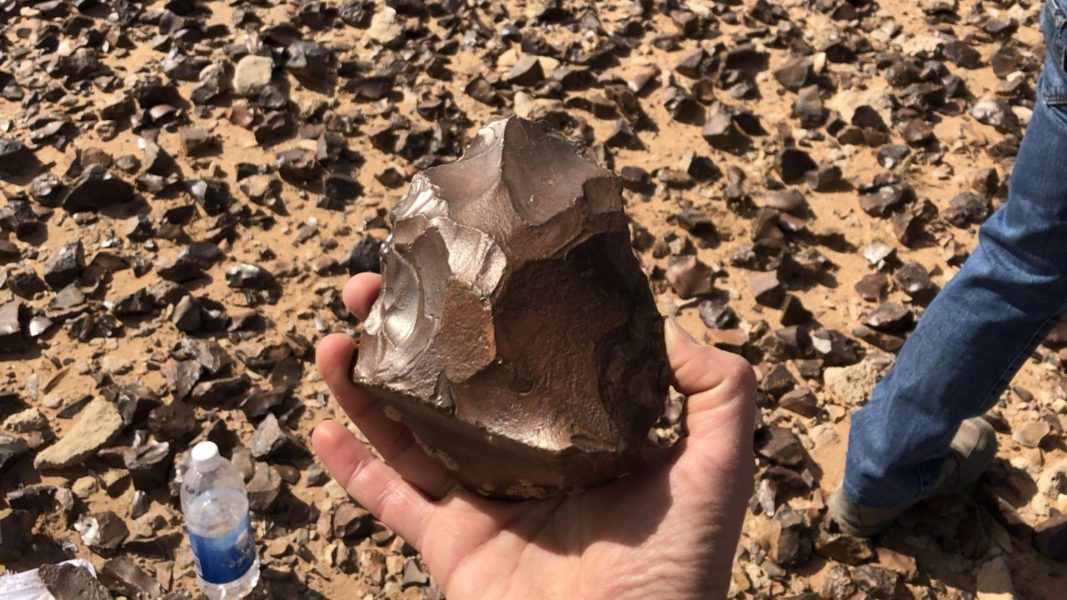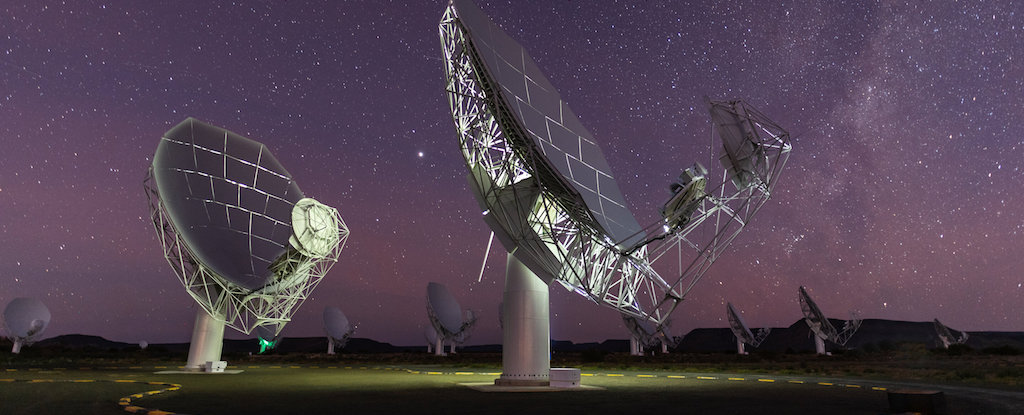Earth’s recent ‘mini-moon’ may be an actual piece of the moon, astronomers say – CNN

Sign up for CNN’s Wonder Theory science newsletter. Explore the universe with news on fascinating discoveries, scientific advancements and more.
A small space rock that lingered near Earth last year and was referred to as its temporary “mini-moon” may actually be a chunk of the moon that chipped off thousands of years ago.
The celestial near-Earth object, known as 2024 PT5, measures about 33 feet (10 meters) wide; however, it’s not in any danger of colliding with Earth now or over the next few decades due to its trajectory, according to researchers. After its close approach to the Earth, 2024 PT5 is slowly receding away in its new, more distant orbit.
But surprisingly, the object’s orbit around the sun is similar to Earth’s, suggesting that 2024 PT5 originated from our corner of the solar system.
Astronomers first spotted the asteroid on August 7 using the South Africa-based observatory of the NASA-funded Asteroid Terrestrial-impact Last Alert System, or ATLAS.
Despite predictions that the asteroid might become a temporary mini-moon whirling around Earth, the space rock maintained a horseshoe orbit that brought it close, but it never actually entered into an orbit around our planet. However, this almost-mini-moon is still special as it is potentially a piece of the real moon, said Dr. Teddy Kareta, a postdoctoral associate at Lowell Observatory in Arizona.
Kareta is the lead author of a study about the object that was published January 14 in the Astrophysical Journal Letters.
“It was never really in orbit, but the vocabulary here to describe what it did do — approach the Earth from the inside, have its orbit slightly altered by a very close approach with the Earth-Moon system, and then recede away from us on the ‘outside’ in an overall horseshoe trajectory — hardly caters to fun nicknames,” Kareta said in an email. “It was nearly orbiting us for about two months. This kind of orbit is fundamentally rare, so it shouldn’t be too surprising that we don’t have a generic term for it yet.”
Kareta and his colleagues observed the object with the Lowell Discovery Telescope and the NASA Infrared Telescope Facility at the Mauna Kea Observatory in Hawaii. As sunlight reflected off 2024 PT5’s surface, the team realized it looked very similar to rocks retrieved from the lunar surface.
“We had a general idea that this asteroid may have come from the Moon, but the smoking gun was when we found out that it was rich in silicate minerals — not the kind that are seen on asteroids but those that have been found in lunar rock samples,” Kareta said. “It looks like it hasn’t been in space for very long, maybe just a few thousand years or so.”
The discovery sheds light on a rare but growing population of lunar asteroids, which could reveal just how many times impacts on the moon have sent wayward space rocks flying into the vicinity of Earth.
Kareta and members of his team at Lowell Observatory, who study near-Earth asteroids on close orbits, were already observing the object before anyone dubbed it a potential mini-moon.
To ensure that 2024 PT5 wasn’t a hunk of space debris, like an old rocket, which can also be found in an Earthlike orbit, the team studied how the object moved.
Space rocks and manufactured items respond differently to solar radiation pressure, or the momentum of particles of light from the sun. These quantum particles, called photons, exert a tiny bit of force when they encounter objects in space. When many photons hit an object, they can speed it up or slow it down.
When photons impact a hollow rocket booster, it moves like an empty tin can getting hit with a wind gust, while an asteroid’s motion won’t be very noticeably affected, according to NASA.
Scientists from NASA’s Center for Near Earth Object Studies (CNEOS), which tracks asteroids and space debris, calculated the motion of 2024 PT5 and determined it was truly a space rock, rather than debris.
“Space debris and space rocks move slightly differently in space,” said study coauthor Oscar Fuentes-Muñoz, a postdoctoral fellow at NASA’s Jet Propulsion Laboratory who worked with CNEOS researchers, in a statement. “Human-made debris is usually relatively light and gets pushed around by the pressure of sunlight. That 2024 PT5 doesn’t move this way indicates it is much denser than space debris.”
Related article
Doorbell camera catches rare footage of meteorite striking home’s front walkway
Robert Jedicke, a specialist emeritus on solar system bodies at the University of Hawaii’s Institute for Astronomy, believes the argument that 2024 PT5 is of lunar origin is convincing because the study authors “have performed an exhaustive analysis of all reasonable options.” Jedicke was not involved in the new study.
“The hypothesis that minimoons, or objects like 2024 PT5 on heliocentric orbits similar to Earth’s, could be chips off the moon is perfectly reasonable,” Jedicke said in an email. “It is expected that some objects launched off the moon by an asteroid or comet impact would evolve into these kinds of orbits.”
Multiple studies about the object have been published since its discovery in August, and a September paper by Carlos de la Fuente Marcos, a researcher on the faculty of mathematical sciences at the Complutense University of Madrid, was one of the first. He said that most research has arrived at a similar conclusion about 2024 PT5 being lunar debris. De la Fuente Marcos was not involved in the new study.
“Right after discovery, CNEOS’ director Paul Chodas stated that the dynamics of 2024 PT5 could only be explained if it was a fragment of the moon released during an impact event. His words have been prophetic,” de la Fuente Marcos said.
De la Fuente Marcos’ paper in September suggested that the object is part of the Arjuna asteroid belt, which is made of small asteroids that have orbits around the sun similar to Earth’s orbit. The possibility that this belt is made of lunar debris is “indeed an unexpected discovery,” de la Fuente Marcos said.
Given the lack of weathering on the asteroid, it can only be a maximum of about a few million years old, Kareta said, but it’s likely much younger. The reflectivity of the asteroid’s surface best matches material from the Lunar Highlands, or the bright, rough terrain on most of the moon’s surface, he said.
If scientists can link lunar asteroids to specific craters on the moon, the space rocks could reveal more about material on the lunar surface, as well as below it.
So far, 2024 PT5 is just the second object in an Earth-like orbit of purported lunar origin. Astronomers found asteroid 469219 Kamo’oalewa in 2016, which was also likely ejected from the lunar surface after something slammed into the moon.
Related article
Astronomers discover two populations of unusual dark comets in our solar system
The discovery of Kamo’oalewa excited asteroid scientists who were eager to find more, but no other candidates have emerged until 2024 PT5.
“If there’s one of something, it’s easy to convince yourself that it’s an outlier or hard to explain,” Kareta said. “If there are two, then there’s a whole population out there waiting to be recognized and studied.”
Kareta and his colleagues estimate that as many as 16 asteroids of lunar origin have already been found and await confirmation.
“The total size and properties of the population are directly related to how often the moon produces these little wayward rocks — that’s the kind of information we want to go after as this population grows,” Kareta said.
More sensitive telescopes coming online in the future, like the Vera Rubin Observatory on Earth (in Chile) and the NEO Surveyor in space, will be able to detect more asteroids in general, including small, faint rocks ejected by the moon.
“We’re also going to have to get savvier about how we can whittle down the dozens or hundreds of candidate objects with interestingly lunar-like orbits before we go out to the telescope,” Kareta said. “It’s like looking for a needle in a haystack, except the needles don’t look too different from the hay until you get them in front of a telescope.”
© 2025 Cable News Network. A Warner Bros. Discovery Company. All Rights Reserved. CNN Sans ™ & © 2016 Cable News Network.
Source: https://www.cnn.com/2025/01/27/science/earth-lunar-asteroid-mini-moon/index.html






